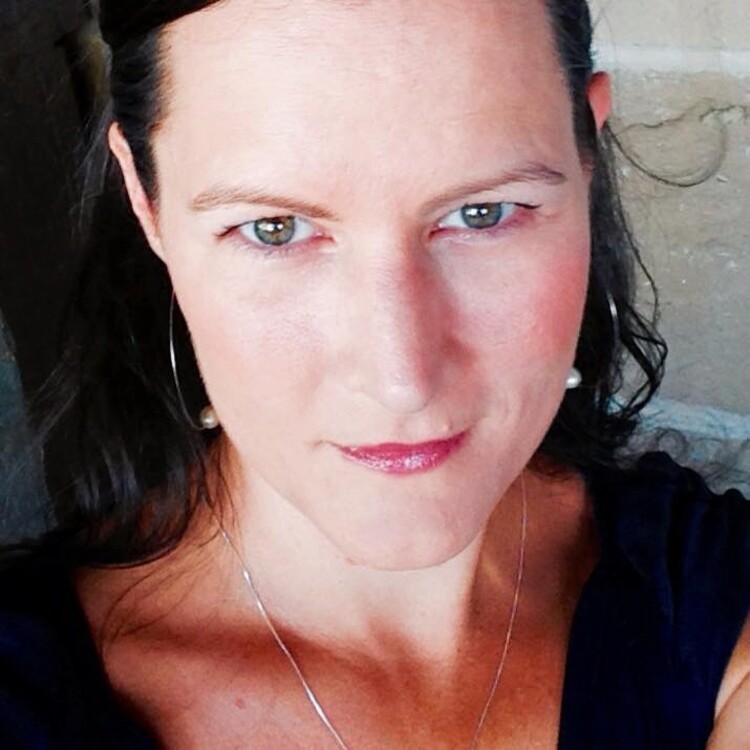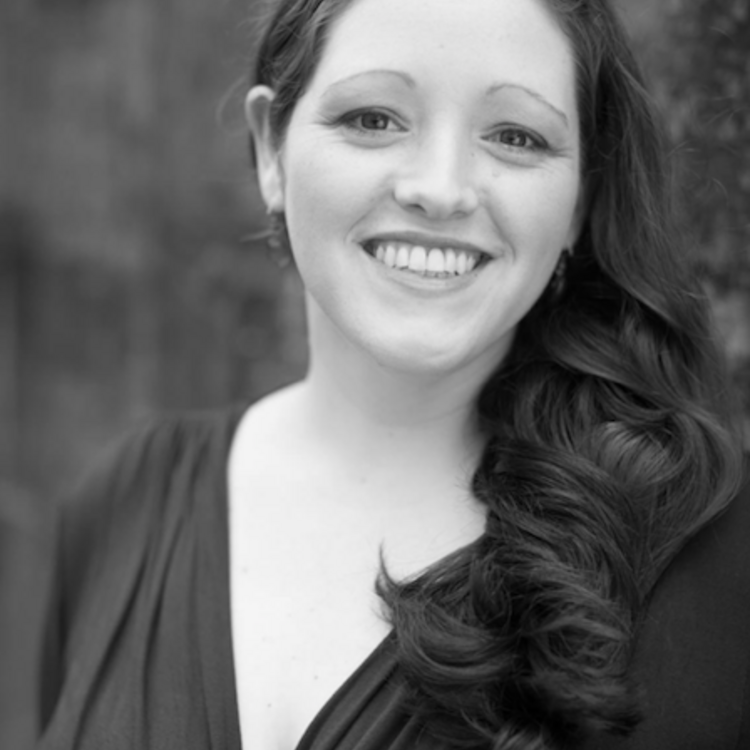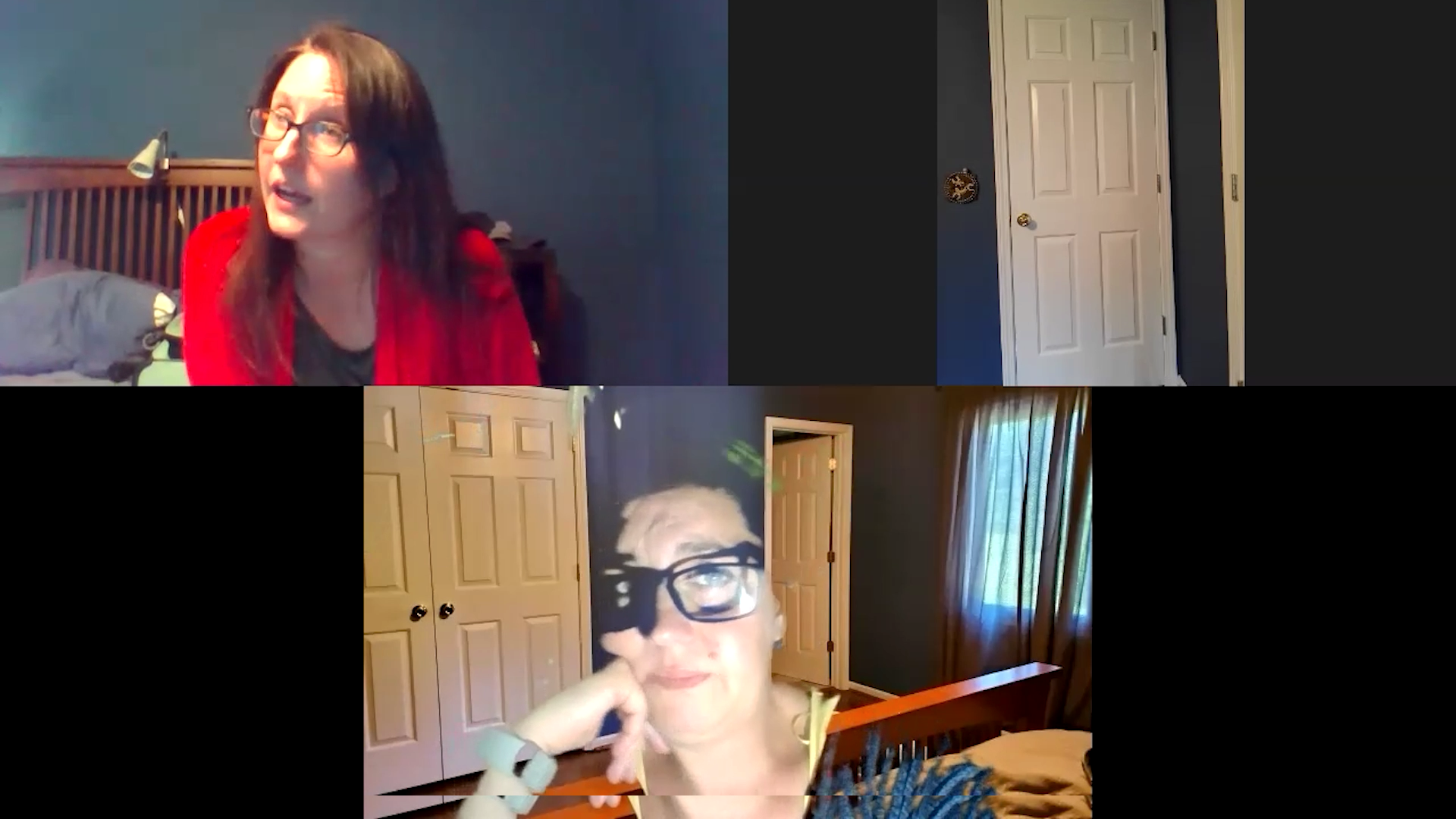Carrie Klewin Lawrence: When we met, I was preparing an online workshop with The Red Wolves Ensemble to explore the possibilities of devising online and was looking for directors who wanted to observe the process and give us feedback. I was working with actors based in various parts of the United States while quarantined in my apartment in Madrid. It was quite thrilling, even virtually, to attend a British happy hour and connect with theatre people from around the world.
What have you been up to during lockdown in London?
Amy Clare Tasker: With Theatre Maker, I’ve been co-leading a course with actor/filmmaker Steve North, called Devising Online. We workshop scenes with eight to ten students that get performed at the Cockpit’s monthly scratch night, Theatre in the Pound.
I’ve been delighted by how many international artists have engaged with Theatre Maker over the last six months, when we moved everything online. Where we would normally reach people in London, we’ve connected with people from all over the UK, as well as Cyprus, Paris, Madrid, New York, California… The limitation that we can’t be in the same room together has created an opportunity: we don’t have to be in the same room, the same country, or even the same time zone.
Tell me about your experiments. What excites you about devising?
Carrie: I really enjoy collaborating. I started out like most, thinking I needed to have all the answers myself. Eventually I realized the work was so much richer when I didn’t have the answers. That’s what really excites me—developing something with an ensemble’s collective mind. I am also interested in dismantling the traditional role of directors. It’s a challenge to focus on stepping back while empowering the ensemble to step up.
Amy: That’s how I got into devising too—I wanted more freedom for my collaborators and less pressure on myself. I love that in the process of making the work, I’m surprised by what we come up with together. A lot of my devising exercises are designed to trick myself and my collaborators into doing something unexpected, and that opens up a world of opportunity.
Carrie: Have you come up with an answer to the question about whether devising online is “theatre” or if it is something else? Is there a consensus in the UK?
Amy: I try not to get too wrapped up in what things are called. There are probably going to be lots of people writing PhDs about virtual theatre or online theatre or whatever we call it. I do think it is something unique. It’s somewhere at the intersection of theatre, film, and site-specific performance. When it’s live and the audience is on Zoom with you, that is theatrical.
What do you think?
Carrie: I keep coming back to the idea of actors and audience sharing the same space—as in the same air—together. And yet I completely support what you’re saying. I think the recent favorite is “live video theatre” thanks to Peter Kuo.
Someone wise told me once that if you’re going to do anything other than the traditional “sit in the dark and watch this” set-up, then you have to re-explain all of the rules.
Amy: Even “live” is up for debate or redefinition. Does “live” mean in person, breathing the same air? Or does it mean, like, live TV news, that it’s happening now, simultaneously? We’re also learning to define online spaces. Are you and I in the same space now? We’re in the same Zoom room.
Carrie: And then is there a difference if you’re in a Zoom room performing for an audience versus it being livestreamed or recorded and then played later?
Amy: I do think that pre-recorded is different from doing something simultaneous on Zoom. The liveness, the feeling of assembly—and especially if it’s interactive—is a totally different experience than watching something like the National Theatre’s broadcast of their pre-recorded shows.
Carrie: What do you think are the requirements for the audience as far as participation goes, or the ways they interact with a piece of theatre online?
Amy: Rather than requirements, I think of it as possibilities of the format. You can have people responding to things in the chat. You can have polls the audience can answer. Like in Adventures of The Red Wolves, you have an audience member playing a role and improvising with the actors.
As part of the Voila! Europe festival 2020 program (another of my projects with the Cockpit), we’ve got a few things coming up with online interaction. In one, the audience is playing a game of bingo, looking at human rights as a game of chance. That’s the format of the show.
I suppose you could also have the audience sitting with their camera off, just watching. That’s kind of equivalent to sitting in the dark in a theatre with the fourth wall.
Carrie: I am definitely less interested in sitting back with the lights off. With Red Wolves, we are asking for full focus and audience participation.
Amy: What are the biggest challenges you’ve encountered devising online?
Carrie: There are the really unexpected moments—like with Red Wolves, we ask for audience participation. On one occasion, it was obvious that our volunteer, from the audience, was driving a car when they joined us online during a live performance.
Amy: Wow! Someone wise told me once that if you’re going to do anything other than the traditional “sit in the dark and watch this” set-up, then you have to re-explain all of the rules. I think that’s a really useful way of thinking about doing anything site-specific or immersive or interactive, and it also applies to doing something online.
It’s not just: “Here’s where your mute button is.” There’s that kind of explaining, but there’s also: “Don’t be driving when you’re watching a piece of theatre.” That’s a brand new rule that you wouldn’t anticipate having to tell someone.
In Aristophanes’ The Frogs, there’s a whole list of rules for theatre at the beginning. In the Sondheim musical version it includes: “Please, don’t fart. There’s very little air and this is art.”
Carrie: Some of the most successful experiences I have had as an audience member, the rules have been clearly outlined. But with Red Wolves we are also playing with the element of surprise, so we’re running that fine line of not giving too much information, which would reduce the playfulness of the work.
Amy: It’s about what people need to know versus what they can be delighted by when they discover it in the piece.
Carrie: Along with the standard bandwidth issues and computers not being able to handle virtual backgrounds, animals and children have spontaneously decided to join us onscreen. We also are asking actors to become their own set, costume, and lighting designers. It’s like we have two options: either give a list of requirements to the actors, which they will need in order to participate, or ask everyone what they have and then create work depending on the resources available.
There’s a desire now for things that we can watch online that are responsive and urgent.
Amy: Online or offline, you can do theatre for millions or you can do theatre for £100, right?
Carrie: Maybe you mail a green screen to everyone with their costumes and props? I’ve also seen how software programmers are getting involved and how theatremakers are creating new jobs for designers. I’m very hopeful about the future of those collaborations.
Amy: There are definitely going to be new kinds of artists that come out of this. And there are already people who are working in digital arts—we’re not the first ones to do performances online.
But what is new is the widespread willingness to engage with this type of work, because our regular theatres are closed. There’s a desire now for things that we can watch online that are responsive and urgent. It’s great that there’s so much available on Netflix, but it takes much longer to produce something at that level than it does to put together a piece of fringe theatre.
Carrie: Red Wolves is an example of that. We started out using Little Red Riding Hood as inspiration and then pivoted to focus on the Black Lives Matter movement. Digital platforms are definitely a way for art that is social justice–focused to develop fairly quickly and reach a large audience.
I have been considering the future of video theatre. Clearly some artists will embrace it and some won’t. We have both found collaborators who are interested in this new genre, and I don’t see that changing. There are big advantages. We had an actor in the workshop who couldn’t participate at the last minute, but with just a couple of text messages we had another artist participating from Washington State within the hour.
I wasn’t sure I would like working this way online. I started the Red Wolves workshop as a challenge for myself—what can I do with this platform that excites me and makes other people want to watch? What I was seeing at the time was just salvaged work already in progress. It wasn’t work created online for an online audience. Now we aren’t just doing “Zoom call” plays. It’s become very creative, and very exciting.
One moment that really worked for me was when the students in your Devising Online class presented a scene that was really violent. I was completely caught off guard and was very emotionally invested in that scene. I did not realize you could pull off that kind of physicality without being in the same space together.
Trying to break Zoom is a good goal, rather than trying to make a show immediately. See where the form takes you.
Amy: They weren’t even in the same country! Creating the violence in that scene was an interesting experiment: one character was threatening another with a hammer and then strangled him. The two actors worked it out so that it looked like the violent character was reaching through the camera—her hand went out of the shot—and the victim enacted the hammer blows and the strangling with his elbow out of frame. My course co-leader Steve did a lot of work with them to really get the physical aspects of it precise. The line between belief and non-belief in that scene is just razor thin, but we are able to suspend disbelief if the work is precise.
There are a few ways to achieve the feeling that the characters are in the same space together. In another one of the scenes from Devising Online, one of the performers had two cameras set up that captured her room, while another performer had a virtual background with a photo of that room, so we had three angles on the same space. It was cool because the technology led the content of the scene. It started out as, “Here’s a way we can be in the same space.” Then, “Oh wait, I look like a ghost. My computer’s not new enough to figure out where my face is.” And then “Okay, fine. My character will be a ghost.” They embraced the glitch and made a feature of it.
New forms lead us to new content if we let them. Not to say that there could never be a show in a theatre about a ghost, but our ghost looked ghostly and not like an actor in a sheet.
Carrie: We had something interesting happen in Red Wolves, because two of the characters are armed and asking to be let into somebody’s home. Audiences see the weapons and think, I’m safe because I’m in my living room, but they also sense that the characters may be in danger. It’s a show that will only work on Zoom, and that is really thrilling to me. I think we’re at the tip of the iceberg of possibilities.
Amy: What advice would you give to those who want to try devising work online?
Carrie: I suggest gathering artists together to try to “break” Zoom. Get in there, push all of the buttons, and experiment. If they’re using music or singing, they’re going to have certain requirements. If they do improvisation, there is a whole other set of requirements. None of us are experts at any of this yet.















Comments
The article is just the start of the conversation—we want to know what you think about this subject, too! HowlRound is a space for knowledge-sharing, and we welcome spirited, thoughtful, and on-topic dialogue. Find our full comments policy here
Thank you, this is very interesting, thought provoking and most of all challenging. You have definitely pre-interupted several future nights' sleep. Again, thank you for increasing the bags under my eyes.